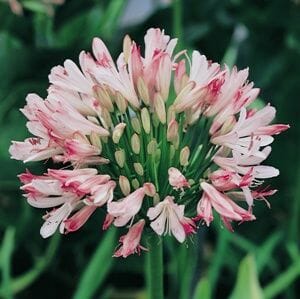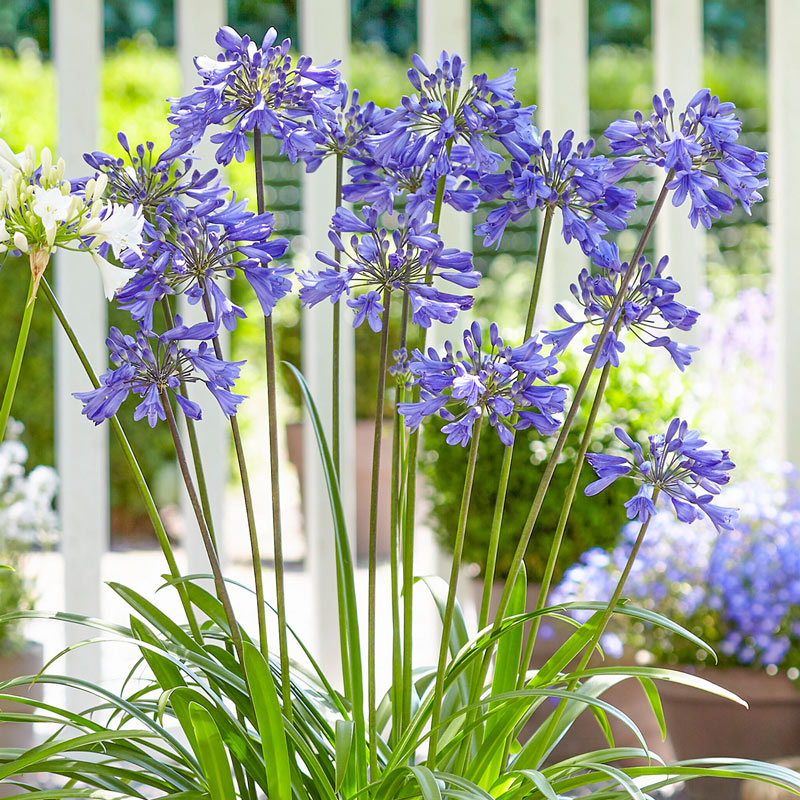Seasonal Agapanthus Care: Planning For Winter Season and Summertime
Seasonal Agapanthus Care: Planning For Winter Season and Summertime
Blog Article
Understanding the Art of Agapanthus Care: Crucial Steps for Healthy Development and Dynamic Flowers
In the world of gardening, the cultivation of agapanthus stands as a satisfying undertaking for those that look for to nurture these elegant blooming plants. From selecting the ideal selection to understanding trimming strategies, the journey towards growing prospering agapanthus plants is complex and holds the vital to opening the full potential of these herb treasures.

Selecting the Right Agapanthus Selection

When picking the right Agapanthus range for your yard, think about variables such as climate suitability, bloom color, and development habit. In addition, take into consideration the environment in your area to make certain the Agapanthus range you select can thrive in your specific conditions. Recognizing the growth practice of different Agapanthus ranges is crucial for correct positioning within your yard.
Ideal Planting Conditions
Thinking about the ideal ecological demands is vital for effective Agapanthus cultivation. Agapanthus plants are delicate to cool temperature levels and need to be safeguarded from frost throughout wintertime months.
To make sure healthy development and vivid blooms, plant Agapanthus bulbs at a depth of concerning 2-4 inches and space them 8-12 inches apart. Including natural issue, such as garden compost, to the dirt can enhance drain and fertility, advertising durable origin growth. Mulching around the base of the plants assists maintain dampness and subdues weed growth. Routine watering is vital, especially during the expanding period, to maintain the dirt continually wet but not soaked.
Watering and Fertilizing Tips
Keeping proper wetness levels and giving crucial nutrients are crucial elements in the treatment regimen for Agapanthus plants. When it involves sprinkling Agapanthus, it is critical to strike an equilibrium. These plants like constantly wet dirt yet are at risk to root rot if overwatered. Throughout the expanding season, water deeply once a week, ensuring the soil is well-draining to stop waterlogging. In hotter environments or throughout durations of drought, even more frequent watering may be essential to keep the soil evenly wet. Nevertheless, reduce watering in the winter season to avoid waterlogged conditions.
Feeding Agapanthus is crucial for advertising healthy growth and prolific blooms. Apply a well balanced fertilizer, such as a 10-10-10 formula, in the early springtime as brand-new growth arises. By complying with these watering and feeding ideas, you can guarantee your Agapanthus plants grow and produce lively, resilient blooms.
Pruning Strategies for Agapanthus
Pruning Agapanthus plants at the proper times and with correct strategies is essential for keeping their health and advertising optimum development and blooming. The optimal time to prune Agapanthus is in late wintertime or very early spring before new development emerges. Beginning by getting rid of any kind of dead or yellowing leaves near the base of the plant. Cut them as close to the ground as possible without damaging the emerging shoots.
Deadheading invested blossoms can additionally reroute the plant's power right into creating more blooms rather than establishing seeds. If you desire to collect seeds for breeding, leave some flowers to fully this page grown and dry on the plant.
Bear in mind to make use of clean, sharp tools to make specific cuts and lower the risk of introducing conditions. Agapanthus. Normal pruning will certainly aid maintain your Agapanthus looking healthy and cool while making sure a bountiful screen of beautiful blooms
Handling Usual Pests and Conditions
After making certain correct pruning methods for Agapanthus, it is important to deal with common insects and conditions that can impact the health and vigor of these plants. Agapanthus plants are normally sturdy but can still come down with particular concerns. One typical parasite that influences Agapanthus is the Agapanthus gall midget. This little, orange fly lays its eggs in the foliage, leading to distorted development and flower buds that stop working to open. To battle this insect, prune see and ruin any damaged plant components and take into consideration making use of insecticidal soap.
One more typical problem is fungal fallen leave place, which offers as dark sores on the fallen leaves. To stop fungal illness, make sure good air circulation around the plants, stay clear of overhanging watering, and get rid of any kind of infected leaves without delay. In addition, Agapanthus plants can experience origin rot if they are planted in improperly draining soil. To avoid this, plant Agapanthus in well-draining soil and stay clear of overwatering. By being attentive and taking punctual action against conditions and bugs, you can aid your Agapanthus plants thrive and generate lively flowers.

Conclusion
To conclude, understanding the art of agapanthus care involves selecting the appropriate variety, providing ideal growing problems, proper watering and fertilizing, over at this website suitable pruning methods, and resolving common parasites and illness. By adhering to these important actions, you can make sure healthy and balanced development and vivid blossoms for your agapanthus plants. Keep in mind to regularly keep an eye on and keep your plants to advertise their total wellness and long life.
To ensure healthy and balanced growth and vibrant flowers, plant Agapanthus light bulbs at a deepness of regarding 2-4 inches and room them 8-12 inches apart. By complying with these watering and fertilizing ideas, you can guarantee your Agapanthus plants grow and generate vivid, long-lasting flowers.
One usual parasite that affects Agapanthus is the Agapanthus gall midget. Additionally, Agapanthus plants can suffer from origin rot if they are grown in poorly draining pipes soil. By adhering to these vital steps, you can guarantee healthy development and vibrant blossoms for your agapanthus plants.
Report this page